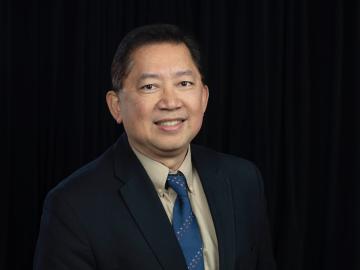Filter News
Area of Research
- Advanced Manufacturing (7)
- Biological Systems (1)
- Biology and Environment (4)
- Building Technologies (1)
- Clean Energy (61)
- Climate and Environmental Systems (2)
- Computational Engineering (1)
- Computer Science (8)
- Fusion and Fission (1)
- Fusion Energy (6)
- Isotopes (1)
- Materials (56)
- National Security (6)
- Neutron Science (24)
- Nuclear Science and Technology (11)
- Quantum information Science (3)
- Supercomputing (31)
- Transportation Systems (1)
Date
News Topics
- 3-D Printing/Advanced Manufacturing (22)
- Advanced Reactors (9)
- Artificial Intelligence (27)
- Big Data (12)
- Bioenergy (16)
- Biology (9)
- Biomedical (10)
- Biotechnology (5)
- Buildings (10)
- Chemical Sciences (8)
- Clean Water (8)
- Climate Change (14)
- Composites (5)
- Computer Science (48)
- Critical Materials (2)
- Cybersecurity (5)
- Decarbonization (14)
- Emergency (1)
- Energy Storage (14)
- Environment (35)
- Exascale Computing (4)
- Fossil Energy (2)
- Frontier (5)
- Fusion (9)
- Grid (8)
- High-Performance Computing (11)
- Isotopes (5)
- ITER (1)
- Machine Learning (10)
- Materials (10)
- Materials Science (28)
- Mathematics (1)
- Mercury (1)
- Microscopy (6)
- Molten Salt (1)
- Nanotechnology (8)
- National Security (9)
- Net Zero (3)
- Neutron Science (26)
- Nuclear Energy (21)
- Partnerships (8)
- Physics (7)
- Polymers (5)
- Quantum Computing (4)
- Quantum Science (18)
- Security (3)
- Simulation (8)
- Space Exploration (6)
- Statistics (2)
- Summit (13)
- Sustainable Energy (18)
- Transportation (20)
Media Contacts

Howard Wilson explores how to accelerate the delivery of fusion energy as Fusion Pilot Plant R&D lead at ORNL. Wilson envisions a fusion hub with ORNL at the center, bringing together the lab's unique expertise and capabilities with domestic and international partnerships to realize the potential of fusion energy.

Rigoberto “Gobet” Advincula, a leader in advanced materials, polymers and nanomaterials with joint appointments at ORNL and the University of Tennessee, has been named to the U.S. National Academies of Sciences, Engineering and Medicine’s Board on Chemical Sciences and Technology.

Researchers at ORNL are using a machine-learning model to answer ‘what if’ questions stemming from major events that impact large numbers of people. By simulating an event, such as extreme weather, researchers can see how people might respond to adverse situations, and those outcomes can be used to improve emergency planning.

Scientists at ORNL completed a study of how well vegetation survived extreme heat events in both urban and rural communities across the country in recent years. The analysis informs pathways for climate mitigation, including ways to reduce the effect of urban heat islands.

The BIO-SANS instrument, located at Oak Ridge National Laboratory’s High Flux Isotope Reactor, is the latest neutron scattering instrument to be retrofitted with state-of-the-art robotics and custom software. The sophisticated upgrade quadruples the number of samples the instrument can measure automatically and significantly reduces the need for human assistance.

A collection of seven technologies for lithium recovery developed by scientists from ORNL has been licensed to Element3, a Texas-based company focused on extracting lithium from wastewater produced by oil and gas production.

The new section of tunnel will provide the turning and connecting point for the accelerator beamline between the existing particle accelerator at ORNL’s Spallation Neutron Source and the planned Second Target Station, or STS. When complete, the PPU project will increase accelerator power up to 2.8 megawatts from its current record-breaking 1.7 megawatts of beam power.

To balance personal safety and research innovation, researchers at ORNL are employing a mathematical technique known as differential privacy to provide data privacy guarantees.

Plans to unite the capabilities of two cutting-edge technological facilities funded by the Department of Energy’s Office of Science promise to usher in a new era of dynamic structural biology. Through DOE’s Integrated Research Infrastructure, or IRI, initiative, the facilities will complement each other’s technologies in the pursuit of science despite being nearly 2,500 miles apart.

ORNL scientists contributed to a DOE technical study that found transitioning coal plants to nuclear power plants would create high-paying jobs at the converted plants and hundreds of new jobs locally.




